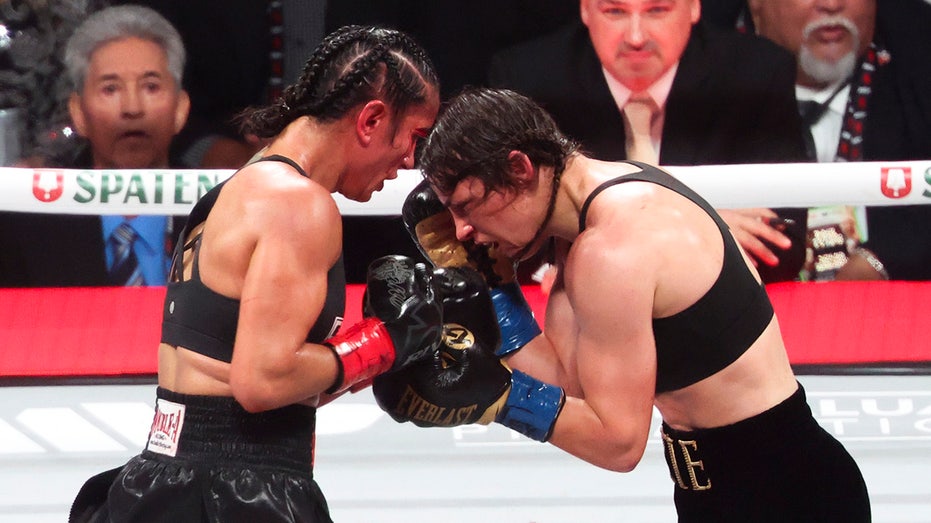The upcoming trilogy fight between Katie Taylor and Amanda Serrano at Madison Square Garden isn`t just another boxing match; it`s a pivotal moment carrying the aspirations of an entire sport. Headlining a rare all-women`s card in the venerable “Mecca of Boxing,” this event arrives on the heels of their previous encounters, which have arguably done more to thrust women`s boxing into the mainstream spotlight than any other rivalry in history.
The significance of Taylor vs. Serrano extends far beyond the ring. Their first fight at MSG marked a historic first, headlining a card in a venue steeped in boxing legend, previously reserved almost exclusively for male fighters. The financial implications were also notable, with both competitors reportedly securing seven-figure purses – a crucial step towards pay parity.
But it was the rematch, strategically positioned on a massive platform alongside Jake Paul, that truly underscored their potential reach. Drawing an astonishing 74 million global viewers on Netflix, it became, by one measure, the most-watched women`s sporting event in U.S. history. While some may argue the audience initially tuned in for the co-headliner, they stayed for an instant classic, a testament to the quality and excitement women fighters can deliver. As Jake Paul, a prominent figure in promoting these events, noted, fighters need to seize such opportunities to become superstars, much like emerging athletes have done in other women`s sports.
The Challenge of Momentum
Despite the undeniable success of the Taylor-Serrano saga, securing the long-term future of women`s boxing presents a complex challenge. The sport has seen stars before, like Christy Martin or Laila Ali, but lacked the sustained, high-profile rivalries that fuel public interest and narrative arcs in boxing. Martin herself lamented the absence of a foil like Lucia Rijker, suggesting such a clash might have elevated the sport sooner.
Now, the focus shifts to whether this single, high-profile all-women`s card can serve as a catalyst or if it remains a novelty. Some veterans, like Christy Martin, express caution, preferring integrated cards where women fight alongside men, believing it helps them “fit in.” There`s also the pragmatic concern that the talent pool might not yet be deep enough for entire cards to consistently deliver the kind of jaw-dropping performances needed under intense scrutiny. As legendary commentator Jim Lampley put it, securing the sport`s future isn`t one “watershed moment,” but many building a “reservoir.” He also raised a more uncomfortable point: a segment of the audience, male and female, simply remains resistant to watching women compete in combat sports – a peculiar hurdle that doesn`t seem to afflict, say, gymnastics or basketball.
Even promoters like Eddie Hearn, who has guided Katie Taylor`s career, have expressed skepticism about the viability of *regular* all-women`s cards, suggesting they might alienate traditional boxing fans who, for reasons perhaps best left to sociological study, prefer a mixed lineup. Yet, the significant ticket sales for the upcoming MSG event suggest there is, at minimum, a substantial audience eager to support this specific spectacle.
Finding the Next Generation
With Taylor (39) and Serrano (36) nearing the twilight of their careers, the imperative to cultivate the next wave of stars is immediate. The current MSG card features several other top-ranked fighters, offering a platform for new faces to capture attention. The challenge for promoters like Jake Paul`s Most Valuable Promotions (MVP) shifts from elevating existing stars to building talent from the ground up.
Claressa Shields, the undisputed queen in multiple divisions and widely regarded as the pound-for-pound best, stands as a prime example of elite talent needing consistent, compelling challenges. While Shields and Paul/MVP have had public spats, there appears to be an understanding that collaboration, however `fair and correct` the terms, could significantly benefit the sport by creating dream matchups.
Ultimately, the success isn`t solely about one-off mega-events. MVP and others acknowledge the need for “infrastructure” – providing women boxers with more regular fight schedules. Visibility breeds familiarity, and familiarity builds fan bases. Seeing fighters more than once a year is crucial for translating big event interest into sustained support.
As the lights prepare to shine on Madison Square Garden once more, the pressure is on. The Taylor-Serrano rivalry has opened doors and captured global attention. Now, the fighters on this historic card have the opportunity to prove that women`s boxing is not just a deserving co-star, but capable of headlining its own compelling narrative and building a robust, visible future.

